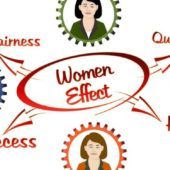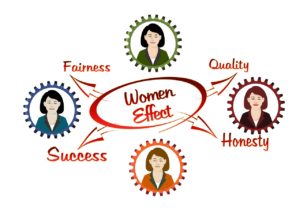 This year’s International Women’s Day (IWD) theme is #BalanceForBetter – a noble aspiration of gender-balanced boardrooms, governments, wealth, classrooms and more. Not at all surprising then that we are 100% behind it!
This year’s International Women’s Day (IWD) theme is #BalanceForBetter – a noble aspiration of gender-balanced boardrooms, governments, wealth, classrooms and more. Not at all surprising then that we are 100% behind it!
I realise that #BalanceForBetter is not just an aspiration, it’s a call to action, asking each one of us to become an agent for change.
And this is what I believe each of us can do:
- Mentor Someone!
Many of us seek out a mentor, but we don’t necessarily think of ourselves as possible mentors. I genuinely believe that each of us has something to offer another, and the journey of discovering for yourself and then offering it to another is as self-fulfilling as it is generous and helpful.
I’m often approached by younger women asking me to share a few success tips to overcome “imposter syndrome” or other unhelpful dialogue. But when I ask them to share some expertise with me, frequently they say they don’t have enough experience to mentor. To which I say: “Don’t sell yourself short!”
With up to five generations represented in the workforce, it is always helpful to have an inter-generational view. I’d love to know more about the aspirations of the younger workforce, how they think, how they approach their career potential, what they believe gender balance means. I personally could also use some help with my digital toolkit – what apps are useful to communicate within virtual teams, which websites/podcasts/videos offer value for time spent, what is the best way to pick up knowledge on-line? Helpful advice from women (and men), who are at the start of their careers, to those of us closer to the latter end.
- Give someone a chance!
We all have pre-conceived notions about each other. A soft-spoken woman could not deal with a heavy-handed client; a man of Muslim background wouldn’t understand the aspirations of a professional woman; a person who grew up on the wrong side of the tracks could never reach the upper echelons of government.
Try challenging yourself. Find a situation in which you have reached a rash judgment about someone based on their outwardly appearance, accent or background (and don’t be too harsh on yourself, we all do that!) Now try assuming the exact opposite of that rash judgment. For instance, if you think that a person has no interest in a particular topic – fashion, theatre, politics, football – assume the opposite and start a conversation with that opposite assumption. Of course, you might be right, they really don’t like fashion. But the main thing to observe is how different your approach to that person will be if you assume they do. And who knows? They might surprise you!
- “JFDI”
Many of us deliberate over future actions. Will I or won’t I? Will I sign up for that acting class? Will I write that book? Will I apply for that job?
Sometimes, it’s better to stop thinking about it and, in the words of a good friend and colleague, JUST FREAKIN’ DO IT! We readily offer reasons (some might say ‘excuses’) why we shouldn’t. Why not break with tradition? Make a commitment, say it out loud to someone and put a date in the calendar by which it will be done! JFDI!
_________
How does all this bring about gender-balance? Like it or not, reaching gender parity will take a big shift in all our behaviours and mindsets. By encouraging yourself to go out on a limb and do the thing that you wouldn’t normally do, you learn how to invite difference into your life and gradually start seeing ‘different’ as the ‘new normal’. Once we have opened our minds to ‘difference’, achieving gender balance will gradually become a more plausible reality rather than remaining a noble aspiration.
What do you think?



 Women over 50 are one of the fastest growing economically active demographics. Fewer than a third are now defined as economically inactive. It’s a largely undervalued resource of skills, talent and expertise. Recent research by PwC estimated that should the UK increase its older worker employment rate to match that of Sweden, a potential £80 billion could be added to our economy.
Women over 50 are one of the fastest growing economically active demographics. Fewer than a third are now defined as economically inactive. It’s a largely undervalued resource of skills, talent and expertise. Recent research by PwC estimated that should the UK increase its older worker employment rate to match that of Sweden, a potential £80 billion could be added to our economy.


 by Helene Winch*
by Helene Winch* However, sustainable investing is a wide and often confusing market, not least when it comes to terminology. It encompasses green (often meant to mean lower carbon impact), social (using finance to create jobs, improve supply chains, support diversity) and ethical (the buyer/investor’s personal moral standpoint – such as anti-tobacco, alcohol) investing. With an estimated market size of £1.57 trillion and the range of sustainable investment products and returns often in line with non-sustainable peers, the question becomes why invest and finance non-sustainable businesses and products, especially when they are not in-line with the investors preferences as a consumer? Why refuse to use and buy plastic and then invest in companies that are doing very little to reduce plastic waste? Likewise, there’s a contradiction in making an active choice to buy organic or vegetarian foods in the supermarket, but then investing in companies that support excessive antibiotic use in food supply chains and meat producers that significantly add to climate warming. Why buy recycled clothes yet continue to finance consumer product companies using child labour or polluting developing countries’ rivers?
However, sustainable investing is a wide and often confusing market, not least when it comes to terminology. It encompasses green (often meant to mean lower carbon impact), social (using finance to create jobs, improve supply chains, support diversity) and ethical (the buyer/investor’s personal moral standpoint – such as anti-tobacco, alcohol) investing. With an estimated market size of £1.57 trillion and the range of sustainable investment products and returns often in line with non-sustainable peers, the question becomes why invest and finance non-sustainable businesses and products, especially when they are not in-line with the investors preferences as a consumer? Why refuse to use and buy plastic and then invest in companies that are doing very little to reduce plastic waste? Likewise, there’s a contradiction in making an active choice to buy organic or vegetarian foods in the supermarket, but then investing in companies that support excessive antibiotic use in food supply chains and meat producers that significantly add to climate warming. Why buy recycled clothes yet continue to finance consumer product companies using child labour or polluting developing countries’ rivers? * Helene has worked in the investment industry for over 20 years and has extensive experience of considering sustainability into investment portfolios.
* Helene has worked in the investment industry for over 20 years and has extensive experience of considering sustainability into investment portfolios.


 It’s a cliché to complain that Christmas seems to start earlier every year – but some clichés are clichés for a reason! My first Christmas event was on the 2nd, and I received my first Christmas card on the 3rd. This month’s diary is laden with a string of festivities with some even spilling over into the New Year. I bet you know exactly what I mean. Even if you don’t actually celebrate Christmas you’ll be lured in by tempting winter pop-up delights like ice-skating, lunches in ‘Alpine pods’ that are a long way from any mountain, special shopping evenings, not to mention endless festive lunches with colleagues and friends.
It’s a cliché to complain that Christmas seems to start earlier every year – but some clichés are clichés for a reason! My first Christmas event was on the 2nd, and I received my first Christmas card on the 3rd. This month’s diary is laden with a string of festivities with some even spilling over into the New Year. I bet you know exactly what I mean. Even if you don’t actually celebrate Christmas you’ll be lured in by tempting winter pop-up delights like ice-skating, lunches in ‘Alpine pods’ that are a long way from any mountain, special shopping evenings, not to mention endless festive lunches with colleagues and friends.
 Written by
Written by 